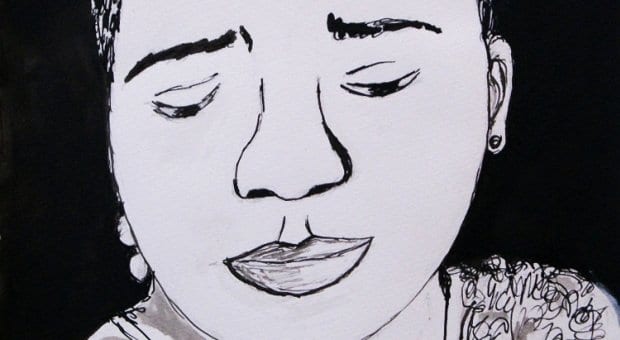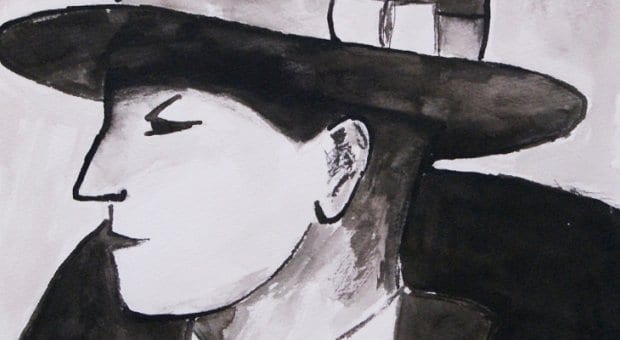
Bessie, by Sarah Hunter. Credit: Sarah Hunter
Sarah Hunter’s coming-out process in life paralleled her coming-out process in art. Though she knew she was queer at four, the Toronto artist didn’t come to terms with her sexuality until the age of 49. Similarly, her current series of queer portraits (her first work to address this subject directly) didn’t start until 2011.
“I thought it would be interesting to do an ongoing series of works on queer artists that had inspired me,” she says. “This led me to explore the kind of subculture that existed for women, especially queer women in the 1920s and ’30s. I was specifically interested in queer women and lesbians living in Paris around that time, because there was something unique going on there.”
The series of small-scale drawings feature images of well-known figures like Colette, Bessie Smith and Billie Holiday, as well as some less famous types, like Djuna Barnes, Janet Flanner and Dolly Wilde. Simply rendered in ink, pastel and watercolour, the images often give little context or information about the people they portray. Rather than providing an in-depth look at queer history, they simply hint where to find it. Viewing the exhibition, one can imagine jotting down a list of names for later Google research.
“A gay friend from England sent me a book all about Dolly Wilde, Oscar Wilde’s niece,” Hunter says. “She was part of a circle of lesbian artists who held salons every week in Paris. They were much like Gertrude Stein’s gatherings, but instead of straight, mostly male artists, they were full of lesbian and bisexual women who came to share stories, read and perform for each other.”
Searching for connections with queer history is a common feature in nearly every coming-out process. In some cases, it’s about having the sense of being part of something larger. Other times, it’s about turning to the past for answers that still have relevance today. In Hunter’s case, the search for queer women in the past was connected to the fact that they’ve largely been erased or forgotten.
“Beyond simply learning about these women, I also wanted to examine how I’d never heard of many of them and probably would not have discovered their work until I owned that I, too, was a queer woman artist,” she says. “As I dug deeper, I was inspired by their amazing contributions to our society. They were tangible proof that what I was thinking and feeling was viable and worthwhile.”
Portraits and Paintings by Sarah Hunter
Sat, March 8–Mon, April 7
Glad Day Bookshop, top floor, 598 Yonge St
gladdaybookshop.com


 Why you can trust Xtra
Why you can trust Xtra


